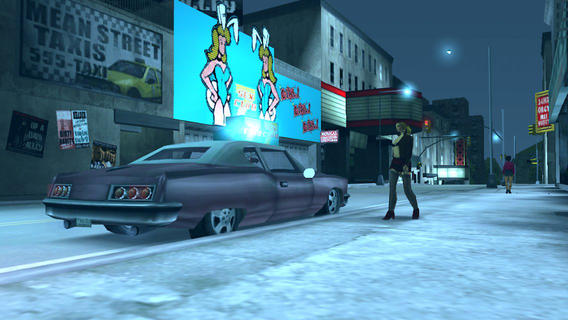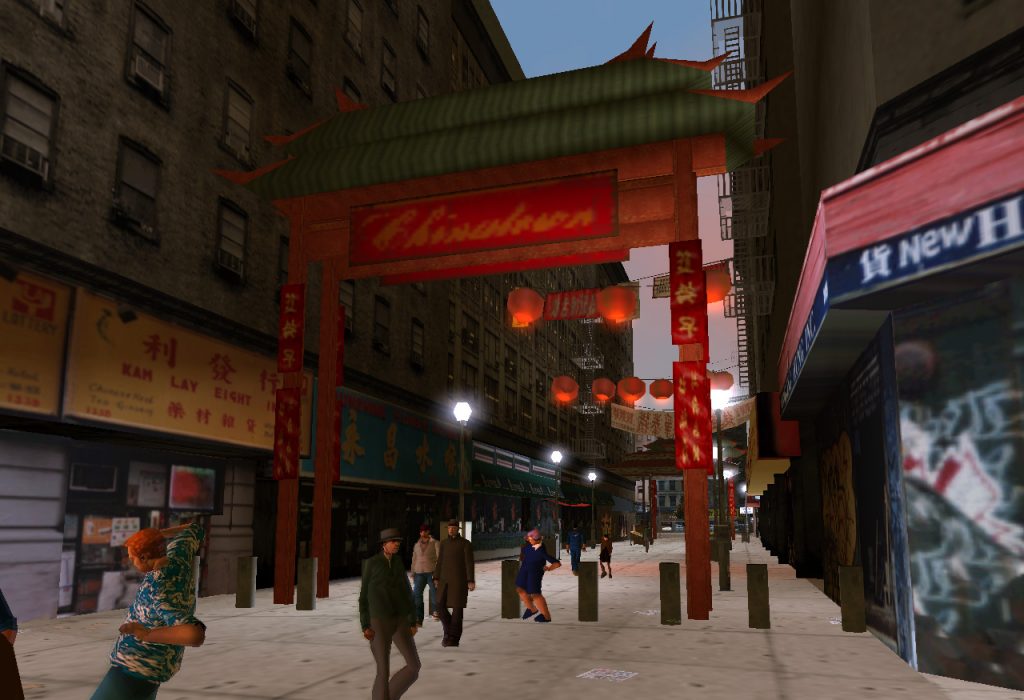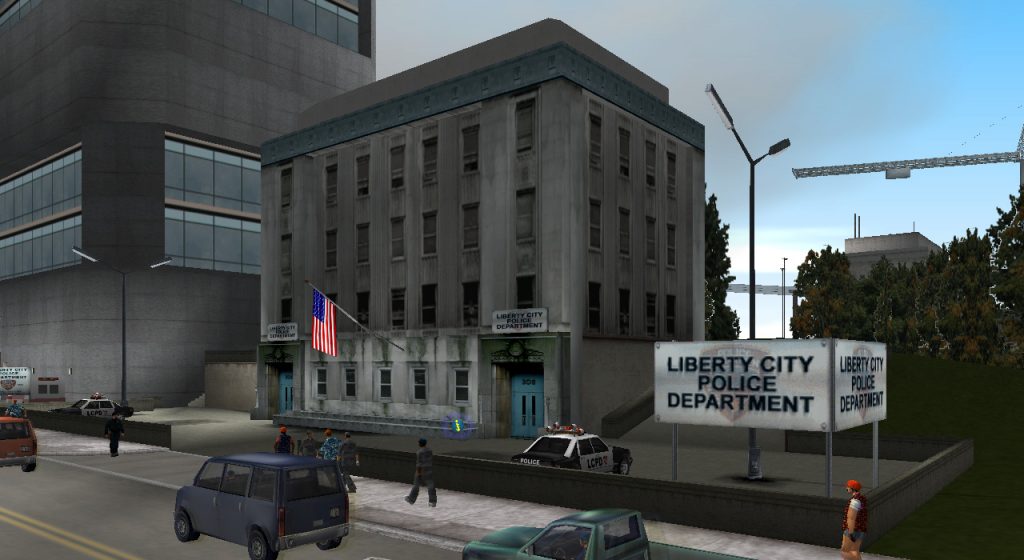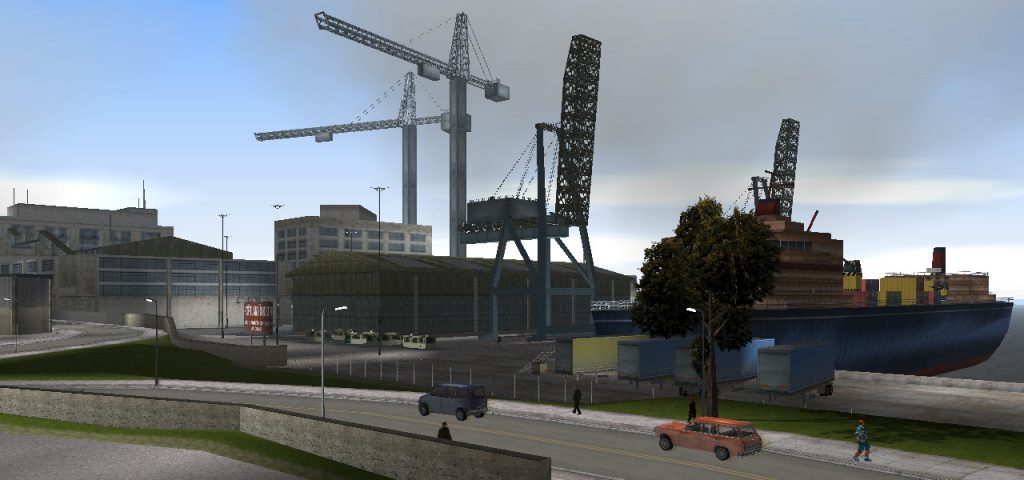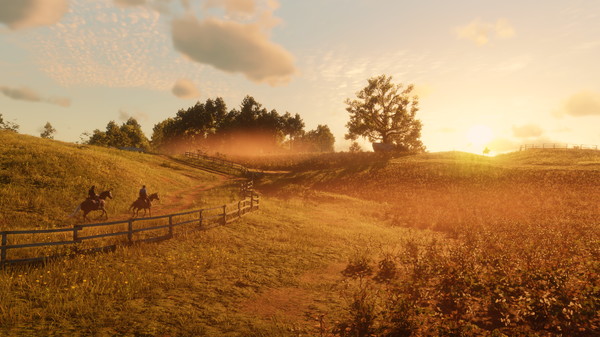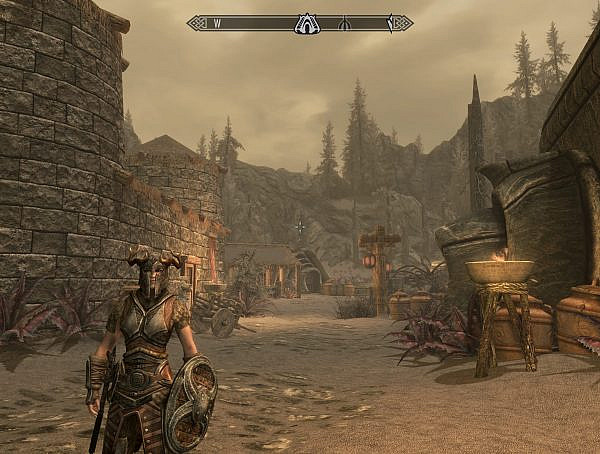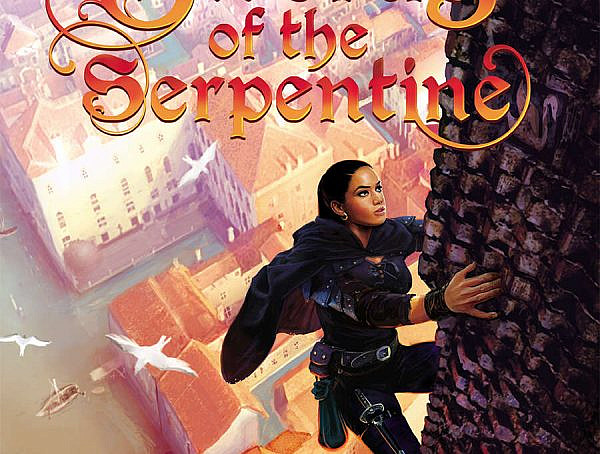If the true protagonist of an open-world game is its setting, then Portland is GTA III’s crown jewel.
Three in the morning. I pull out of my safe house on the edge of the Red Light District, and hijack a taxi cab as it rolls by. For the next six minutes I cruise around Saint Marks, picking up fares from Trenton to Harwood. The same song I’ve heard six times over is on the radio. “Common lady, gone crazy,” they sing. I turn over to the talk station. Lazlow and Fernando are butting heads again.
Just as I take a turn to Chinatown, one of the Triad gang members in their blue jumpsuits pulls me out of my cab. I pull out my uzi and mow down the Triad goons, catching the attention of the nearby police. I hijack a mob cruiser, and ramp over the elevated rail lines as the cops give chase. Despite evading the heat, I flip my car over, and it soon catches fire – as it always does. Unable to get out in time, I perish as the car explodes in flames. Five seconds later, I wake up outside the hospital, all the money I earned from taxi fares gone down the drain.
Another perfect day in the worst place in America.
Grand Theft Auto III is a bit of an odd duck. As the first fully three-dimensional GTA game, it completely overhauled the series with a new perspective, new mechanics and play systems that would carry over into its two sequels, Vice City and San Andreas. Yet, it still features some of the idiosyncrasies of 2D GTA, and is overall very rough around the edges compared to its follow-ups. And yet, one of the most counter-intuitive gameplay choices it makes – stranding the player on Portland Island for the first half of the game – is probably one of the most effective things the game does to set its mood.
First, a quick refresher: Grand Theft Auto III is of course set in Liberty City, the GTA universe’s analogue to New York, which is separated into three distinct boroughs. Naturally, at the start of the game the player arrives in the district of Portland, and is cut off from the rest of the city both by a destroyed bridge as well as an unfinished tunnel to the two other islands. To gain access to the rest of the city, the player has to complete a variety of odd jobs for the local mafia before the bridge magically fixes itself and the tunnels open up again, a structure that would be repeated in Vice City as well as Liberty City Stories.
Restricting the player’s movement to just a third of the whole map seems counter-intuitive in a sandbox game all about freewheeling chaos and bedlam. But on the other hand, it also has the effect of forcing the player to fully familiarize themselves with that small play area for those first dozen or so hours of playtime. In the time it took for me to finish those missions, Portland became a sort of home away from home on my criminal adventures, its streets etched into my mind to the point where I’d be able to navigate it blindfolded.
And what a town it is. The dirty streets of the Red Light District, illuminated by the neon glow of the Sex Club 7 sign, overcast by train tracks. Salvatore’s mansion with a beautiful view of the lighthouse. The dog food factory in Trenton that probably derives its products from human flesh, next to the dank docks of the Atlantic Quays. The restaurant in Saint Mark’s, where Mrs. Cipriani is probably still yelling at her ne’er-do-well son to this day, decorated in red, white and green. The red banners and bright lanterns of Chinatown, right next to the Punk Noodles diner. Places that are all familiar to us, grimy and grotty, yet familiar and relatable.
Through its endeavors to create a crass, exaggerated portrayal of the urban sprawl, Liberty City’s Portland gains an identity all its own, an amalgam of sights and sounds we recognize from American pop culture distilled into an interactive space. This is also something that Vice City especially excelled at, but GTA III gets the credit for being the first to truly succeed in creating such a familiar virtual playground. It’s absolutely the game’s greatest achievement over the 2D GTAs, where the worlds were simple birds-eye view maps that allowed for little sense of familiarity and every street looked the same. In GTA III, the on-the-street worm’s eye view truly allows the player to immerse themselves in its world, to know these streets like one’s own hometown, which no doubt helped the series rise to the immense popularity it would soon receive.
GTA III‘s Portland makes a hell of a first impression: A true example of why the game was such a breath of fresh air in its day, and a beautifully realized virtual space, both in terms of possibilities and setting the tone for the sick, sad world of GTA. Sure, that bridge did eventually fix itself and open up the rest of Liberty City for exploring, but in my heart I wished I could have stayed in Portland for the rest of the game.
Shoreside Vale can go straight to hell though. Terrible place, that.
You might also like
More from Features
Game Awards – Celebration of talent or a Marketing Extravaganza?
The Game Awards 2024 is over and the winners are announced. However, are they still following the same pattern that …
Worlds in a Finnish Theater: League Finals, Community, and Döner Kebab
I travelled to Helsinki to watch League finals in a cinema, and it was worth it. #leagueoflegends #esports #community #worldfinals







